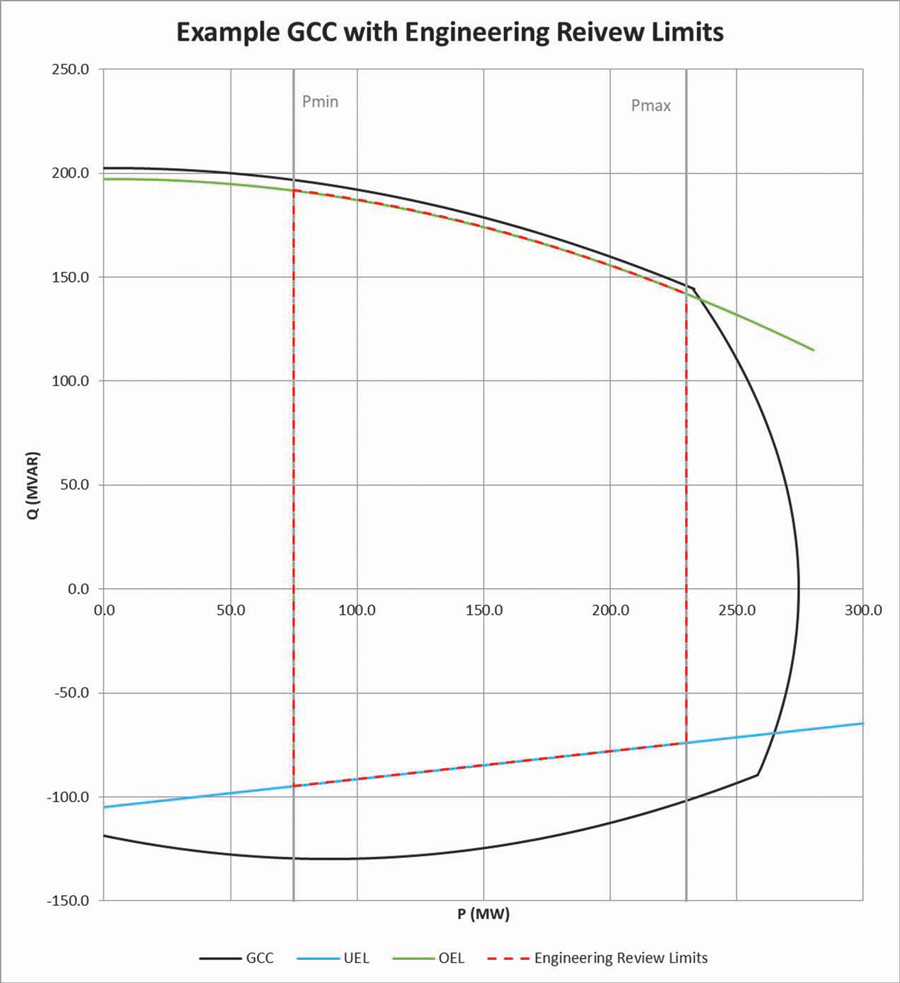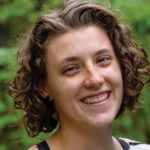In the upcoming years, changes to the existing NERC standards and approved models will be proposed. These changes will impact the synchronous generator (SG) compliance approach and representation. This article outlines proposed changes relevant to generator owners and the impacts on compliance efforts for two such standards: MOD-025 and PRC-019. We also briefly discuss the newly proposed generator model, GENQEC, which is now accepted by NERC as well as the Western Electricity Coordinating Council (WECC), and provide references for more information about these changes are provided.
MOD-025
NERC Project 2021-01 includes two standard authorization requests (SARs). The first SAR proposed modifications to MOD-025-2, the active version of the MOD-025 standard. As it stands, MOD-025 requires testing to be performed every 5 years to verify the real and reactive capabilities of generating units. Verification must also be performed if a change is made to the unit that will impact its capabilities. This testing includes reaching the leading and lagging reactive capabilities at both minimum and maximum active power. The main objective of this standard is to provide transmission planners with confirmation that units can reach expected power limits, ideally by hitting the over-excitation limiter (OEL) or under-excitation limiter (UEL), if used.
The issue with this testing is that the results are mainly dependent on grid conditions at the time testing is performed. For example, if the grid is operating at a higher voltage level, the generating unit will not be able to export as much lagging reactive power before reaching a high-voltage limit as in a low grid-voltage condition. Conversely, if the grid is operating at a lower voltage level, the generating unit will not be capable of absorbing as much leading reactive power before reaching a low-voltage limit as in a high grid-voltage condition. In theory, the transmission operator could be contacted and asked to adjust the voltage, but in practice, it is not usually feasible to adjust the voltage enough to observe the entire reactive range of the generators.
Draft 1 of a new revision, MOD-025-3, seeks to address these concerns by expanding the available methodologies for verifying the generator’s real and reactive capabilities to include an engineering review in addition to the already available staged testing or operational data approaches.[1] The engineering review would include consideration of the equipment design, excitation limiters, and operational limitations to justify the reported capabilities. The draft also provides a graphical composite capability curve to document the minimum and maximum capabilities alongside the generator capability curve (GCC) as well as limiters such as OEL or UEL, if used (Figure 1).[1]

Additional changes in the proposed draft include extending the periodicity of reverification from every 5 years to every 10 years provided no other applicable event, such as a qualifying outage or a change made to a limiter setting, that impacts the reported capability of the generator[1] occurs.
The comment period for the draft ran from September to November 2022, followed by the voting period in November 2022. The draft was not approved, and drafters are now reviewing and deciding on the next steps, but comments and ballot results are available for viewing on the NERC Project 2021-01 webpage.[7] While the fate of the standard is not sealed, expect this standard to be revised with new requirements in the near future.
PRC-019
The second NERC Project 2021-01 SAR includes proposed modifications to PRC-019-2, the active version of the PRC-019 standard. While most of these modifications propose changing the standard to better consider the unique aspects of inverter-based resources (IBRs), the SAR also includes proposed edits that impact synchronous generation compliance evaluation.
In Draft 1 of the new revision, PRC-019-3, the requirements have been reformatted such that Requirement R1.1 relates to synchronous generation while Requirement R1.2 relates to IBR generation. Requirement R1.1 is largely similar to the existing PRC-01902 R1.1 since the standard was originally written with a bias toward synchronous generation. However, one significant proposed change is the removal of requiring protective functions to coordinate with stability limits, such as the steady state stability limit (SSSL).[1]
In the conventional assumption for SSSL calculations, it is assumed that a generator operates with fixed field voltage. This is a conservative assumption since interconnection agreements and transmission planners require the majority of synchronous generators to operate with automatic voltage regulation (AVR) in automatic, not manual, mode. In other words, a unit’s AVR continuously regulates the voltage so that the SSSL is not reached. Therefore, the new PRC-019 revision does not include coordination between the loss of field relays or the UEL with the SSSL.
Another proposed change in Attachment 1 includes synchronous generator reactive capabilities in the list of functions that need to coordinate with equipment capabilities. Related to MOD-025, this would require confirming that the OEL and UEL are reasonably set against the equipment capabilities.[1] The industry has generally already included this confirmation in a PRC-019 assessment, but the revision would explicitly require it.
The draft of this standard had the same comment period and voting period as MOD-025. This draft was also not approved, and drafters are reviewing and deciding on next steps. Comments and ballot results are available for viewing on the NERC Project 2021-01 webpage. Similar to MOD-025, while the fate of the standard is not sealed, expect this standard to be revised with new requirements in the near future.
GENQEC GENERATOR DYNAMIC MODEL
Several dynamic models exist for synchronous generators. These models have been used to represent various generator configurations — round-rotor, salient-pole, etc. — and have been accepted by various regulatory entities at different times. One of the major differences between the generations of synchronous generator models is how saturation is represented by the dynamic parameters and accounted for within the model.[2][3]
GENQEC models saturation using a new parameter: Kw. This parameter represents the rotor field current compensation factor and can be determined in multiple ways as outlined by Wang.[4] The first method covered here uses the zero-power-factor saturation curve and the open-circuit saturation curve. These curves are typically available from generator manufacturers. However, if they are not available, this Kw saturation factor can also be determined through testing. Wangincludes a detailed description of the model and references an example of how to determine Kw.
Highlights from Wang include:
- The necessary test points are obtained while the unit is online.
- High-load operating test points also produce good Kw fitting results for other operating points.
- Generator terminal voltage, active power, reactive power, and rotor field current must be measured.
- Unless generator rotor position/angle can be measured, accurate generator parameters are critical for good fitting.
With appropriate test results available, Kw can be fitted by comparing outputs from the model to measured values.
Using GENQEC is not yet required, but the model is currently accepted by both NERC and WECC.[5][6] Looking ahead, however, generator models for sites in WECC should be transitioned to using GENQEC following testing. WECC will no longer accept GENTPF or GENTPJ models after December 31, 2023, and while GENROU and GENCC will still be approved and accepted, these models should also be converted to GENQEC, following WECC conversion guidance.[5]
CONCLUSION
NERC standards and accepted models are always evolving. While many revisions are inspired by the vast number of IBRs being added to the grid, improvements and adjustments are still being made in the synchronous generator world. In order to maintain and improve the sustainability of the power grid, it is crucial for generator owners to be aware of and comply with most current revisions of NERC regulations.
REFERENCES
[1] Jason Eruneo, Kory Haag, and Chris Larson. NERC Industry Webinar Project 2021-02: Modifications to MOD-025 & PRC-019, October 18, 2022. [2] Pouyan Pourbeik, Bajarang Agrawal, Shawn Patterson, and Randy Rhinier. “Modeling of Synchronous Generators in Power System Studies,” CIGRE Science and Engineering, October 2016. [3] NERC. Modeling Notification Use of GENTPJ Generator Model, November 18, 2016. [4] Quincy Wang. GENQEC Generator Dynamic Model Specification, September 9, 2020. [5] WECC PPMVDWG. Retirement Plan for GENTPJ Model from WECC Study Cases, January 27, 2022. [6] NERC. Acceptable Models List.xlsx, Version 17, June 2021. [7] NERC. Project 2021-01 Modifications to MOD-025 and PRC-019. Accessed at https://www.nerc.com/pa/Stand/Pages/Project_2021-01_Modifications_to_MOD-025_and_PRC-019.aspx.
Casey Whitt has worked for Ready Technologies Inc., a Division of Shermco, since she graduated from Oregon State University with a BS in electrical and computer engineering and a minor in computer science. Her current area of focus is assessing NERC compliance, particularly for renewable sites, but she is also interested in renewable energy positive sequence modeling, electromagnetic transient modeling, and protection system design. She is currently working towards her Professional Engineer license.

Maysam Radvar, MEng, PEng, PE, SMIEEE,is a Senior Power Systems Engineer. After acquiring BS and MS degrees in electrical engineering at the University of Alberta, he established his career in the field of power systems and protection Systems. Maysam is interested in NERC compliance studies, generator baseline testing, NERC MOD-026 and MOD-027 testing, power system dynamic and transient stability analysis, power system protection design, and renewable energies. He is a Senior Member of the IEEE Power and Energy Society (SMIEEE), the North American Generator Forum (NAGF), and the Western Interconnection Compliance Forum (WICF). He is a Professional Engineer in Washington, Wyoming, Colorado, California, Texas, South Dakota, and Maine, as well as in the Canadian provinces of Alberta, British Columbia, Saskatchewan, and Ontario.
